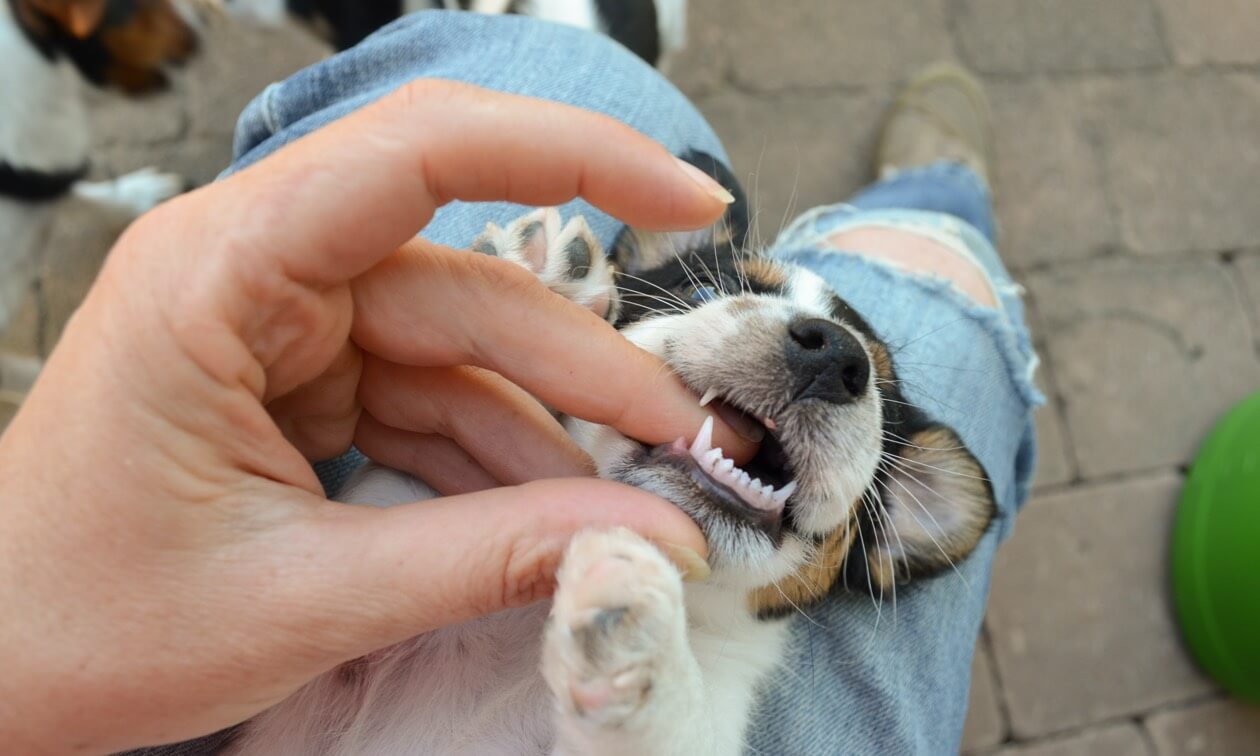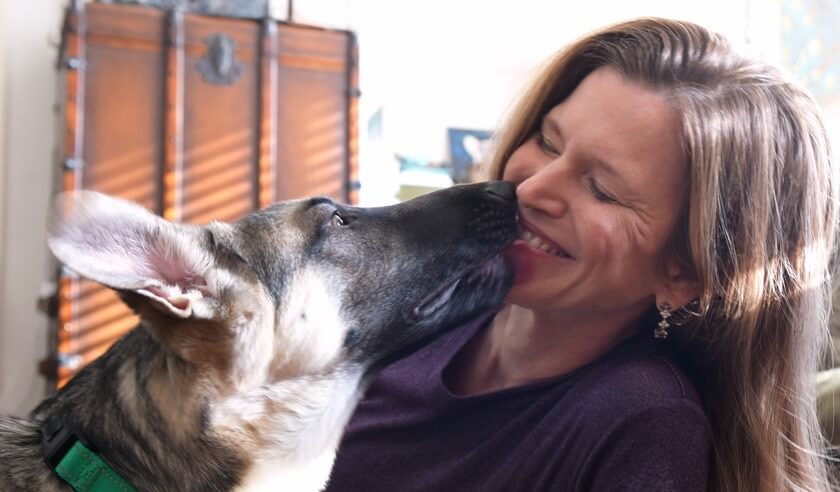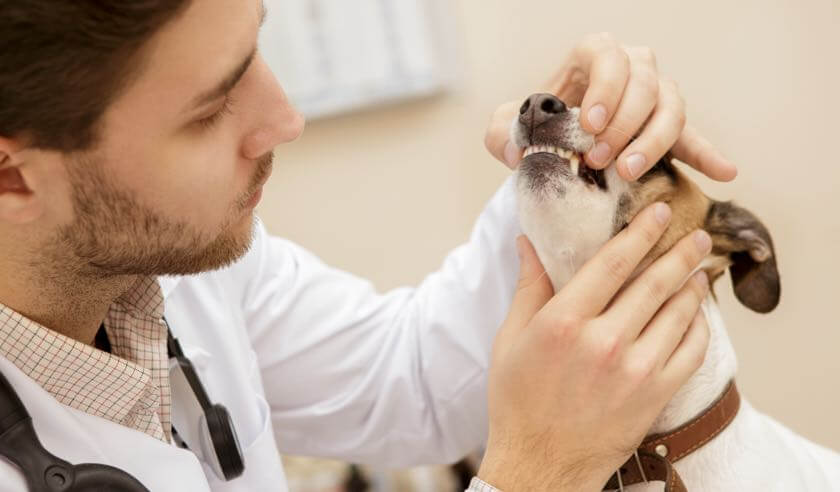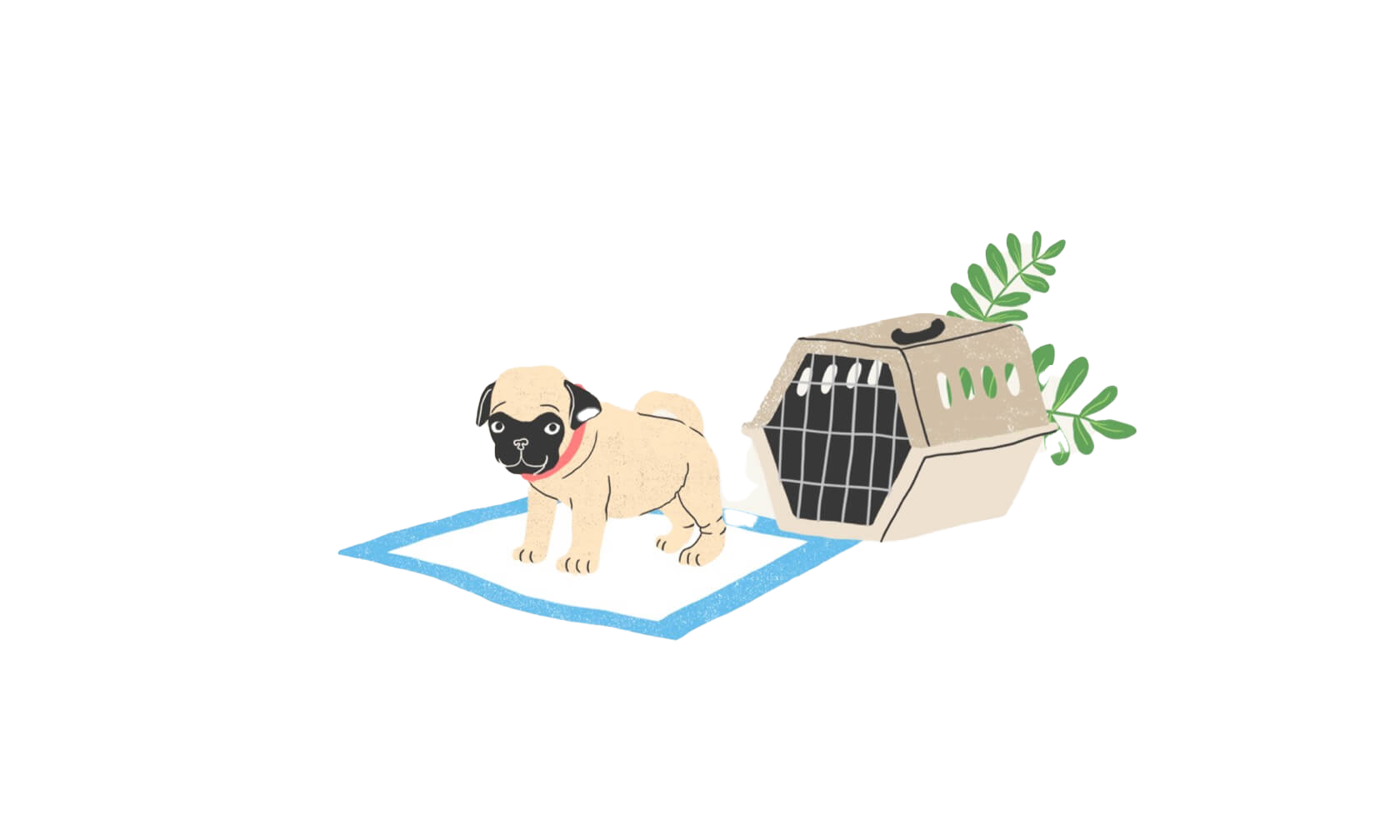There are few things in this world more adorable than puppies. But with anything new (and adorable) comes a steep learning curve. Did you know puppies, like babies, go through a teething stage? Read on if you have questions about puppy teething, what to expect, or how to handle it. A little knowledge can make the whole process easier for you and may even save your favorite shoes from becoming a chew toy.
What is Teething?
To put it simply, teething is how new teeth come in. The first part of your puppy’s teething occurs when the baby teeth (also called deciduous teeth) break through the gums. The second phase of teething occurs when their permanent teeth push out their baby teeth.
Other than the potential destruction of your belongings as they try to soothe their gums and explore the world around them through their mouths, teething shouldn’t be much of an issue for you and your pup. In general, it isn’t a very painful process but can be uncomfortable.
Signs of Puppy Teething
Puppies chew on everything, but that doesn’t always mean they are teething. Look for these signs:
- Red and inflamed gums
- Mild discomfort in the jaw
- Drooling
- Increased or excessive chewing behavior
- Bleeding gums
- Missing teeth
- Chewing more slowly and carefully
When Does A Puppy Start Teething?
Your puppy’s first baby teeth will start to erupt around 2 weeks old. By about 4 weeks old, most of their 28 tiny, sharp baby teeth are in, and your puppy starts to explore through chewing.
How Long Does Puppy Teething Last?
From the first baby tooth to the last adult tooth, the entire teething process is about 7½ months. It varies slightly by breed.
When Do Puppy Teeth Fall Out?
Puppy teeth generally fall out in a particular order and at certain ages.
- 12 to 16 weeks — the front teeth (incisors)
- 16 to 24 weeks — the sharp fang teeth (canines)
- 24 weeks — the back teeth (premolars)
Puppies do not have any baby molars.
When Do Puppies Get Their Permanent (Or Adult) Teeth?
Knowing when permanent teeth erupt is as important as knowing when your pup will lose their baby teeth, so you can monitor for dental abnormalities, such as missing or crooked teeth.
In general, all 42 permanent teeth should erupt by 8 months of age. The following is an average timeline of when to expect those teeth.
- 2 to 4 months — 12 incisors
- 5 to 6 months — 4 canine teeth
- 4 to 6 months — 16 premolars
- 4 to 7 months — 10 molars
What Happens When Puppy Teeth Fall Out?
More often than not, puppies end up swallowing most of their baby teeth. This is completely normal and nothing to worry about. You may even find some on the floor.
What Do Puppy Teeth Look Like When They Fall Out?
The teeth are typically very white, small, and pointed. You will not notice much of a root because they’re absorbed as the adult teeth develop in the jawbone. This is also why the baby teeth become wiggly and fall out.
Common Dental Problems in Puppies
While teething is a natural process, it still requires monitoring to catch issues that may require a visit to your veterinarian. It’s best to schedule a dental appointment before your puppy is finished teething to be sure all is well.
High Fever
Just as human babies can have a mild fever when teething, so can puppies. But if it gets above 102.5 F and they appear lethargic, contact your veterinarian. Your vet can also show you how best to take your puppy’s temperature.
Bleeding From the Gums
This is normal, but only in small amounts. If you notice large amounts of blood, seek immediate veterinary care.
Deciduous (Baby) Teeth Do Not Erupt
There are cases where the pup’s gums are too fibrous, and the baby teeth cannot push through. This may require surgery to correct.
Baby Teeth Do Not Fall Out
This can occur when the permanent teeth grow in the wrong direction. The baby teeth will need to be removed to prevent further dental complications.
Permanent Teeth Are Unformed
When this occurs, the baby teeth remain since there aren’t permanent teeth to push them out.
Baby Teeth Get Broken
This can lead to an infection and potential damage to the permanent teeth.
If your puppy shows any of the following symptoms, it’s also time to talk with your veterinarian:
- Refusal to eat, even soft food
- Obvious pain
- Lethargy
- Unwilling to play or interact
How to Help A Teething Puppy
Teething can be a trying time for both you and your puppy. The main goals as a pet parent are to help relieve their discomfort, satisfy their cravings to chew, and, let’s be honest, protect your belongings!
There are a few reasons for increased chewing during teething. Chewing helps ease the discomfort of sore and inflamed gums. That’s why cool or cold objects seem to help. Chewing also acts as a distraction from the discomfort of teething. Lastly, during the teething process, puppies are experiencing some hormonal changes that can cause them to chew more.
Here are a few things you can offer your puppy to help soothe them. Remember, nothing should be offered for chewing without proper supervision. And throughout the teething process, your pup’s chewing preferences may change.
A Frozen Mini Bagel or Frozen Fruit
These can be soothing for sore gums and may help loose baby teeth fall out. Only use a plain mini bagel or fruits that are safe for dogs. No grapes or raisins!
A Frozen Dish Towel
Soak and twist a towel before placing it in the freezer until frozen. This is a softer, soothing option. Be sure to use a towel without holes or loose threads that teeth can get caught on. Don't use a towel with soap or other cleaning products on it.
Teething Toys
There are a variety of commercially available toys made specifically for puppy teething.
Avoid giving your puppy ice cubes, as they are too hard and present a choking hazard. Also refrain from pulling a loose tooth. Puppy teeth have long roots that can break if you pull, potentially causing pain, infection, and/or problems with the developing permanent tooth.
Best Toys for Puppy Teething
Providing your puppy with a safe chewing toy is one of the best things you can do for them. Look for options that are:
- Specifically made for puppies
- Soft/flexible
- High quality, tough rubber
- Durable
- Easy to clean
- Different textures and shapes
- Freezable
- Appropriately sized for your puppy
Do not give chew toys that are too small or big. If they’re too small, they are a potential choking hazard. Chews that are too big can cause injury to the mouth and jaw. Do not give hard chews because they may break the delicate baby teeth. If you’re unsure about what chew toys are best, consult your veterinarian.
ZPC-01804R1





